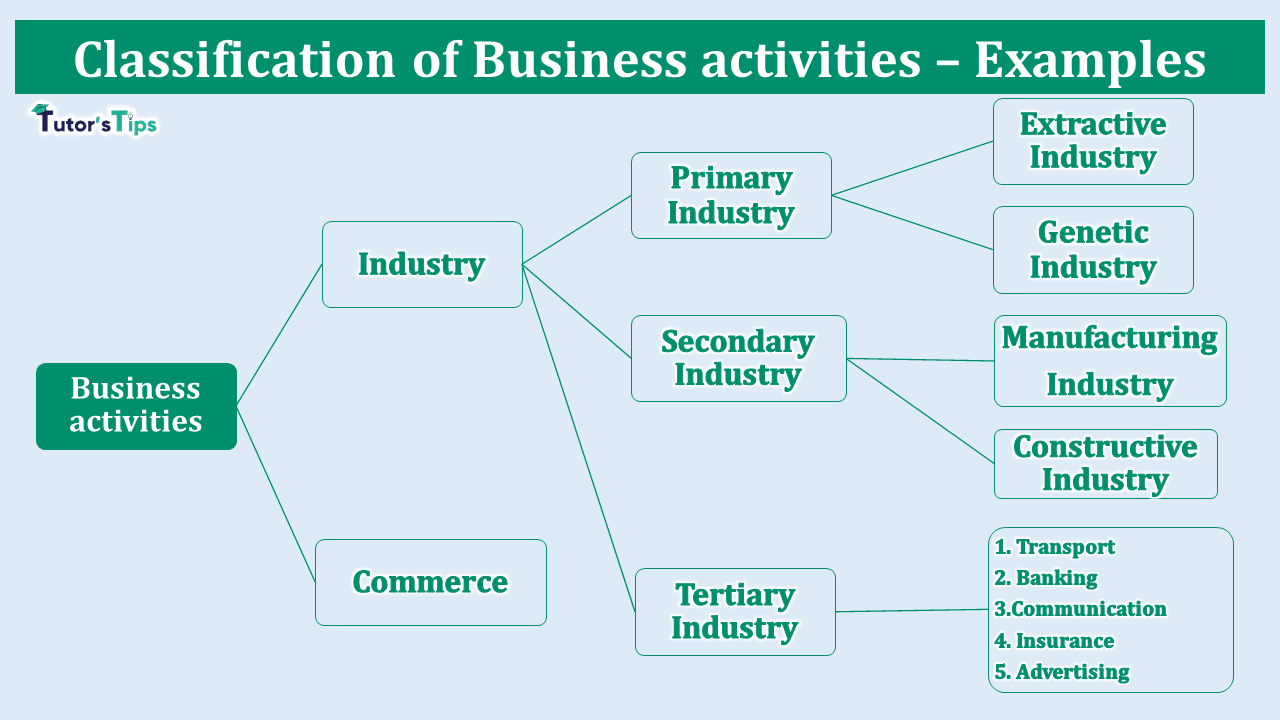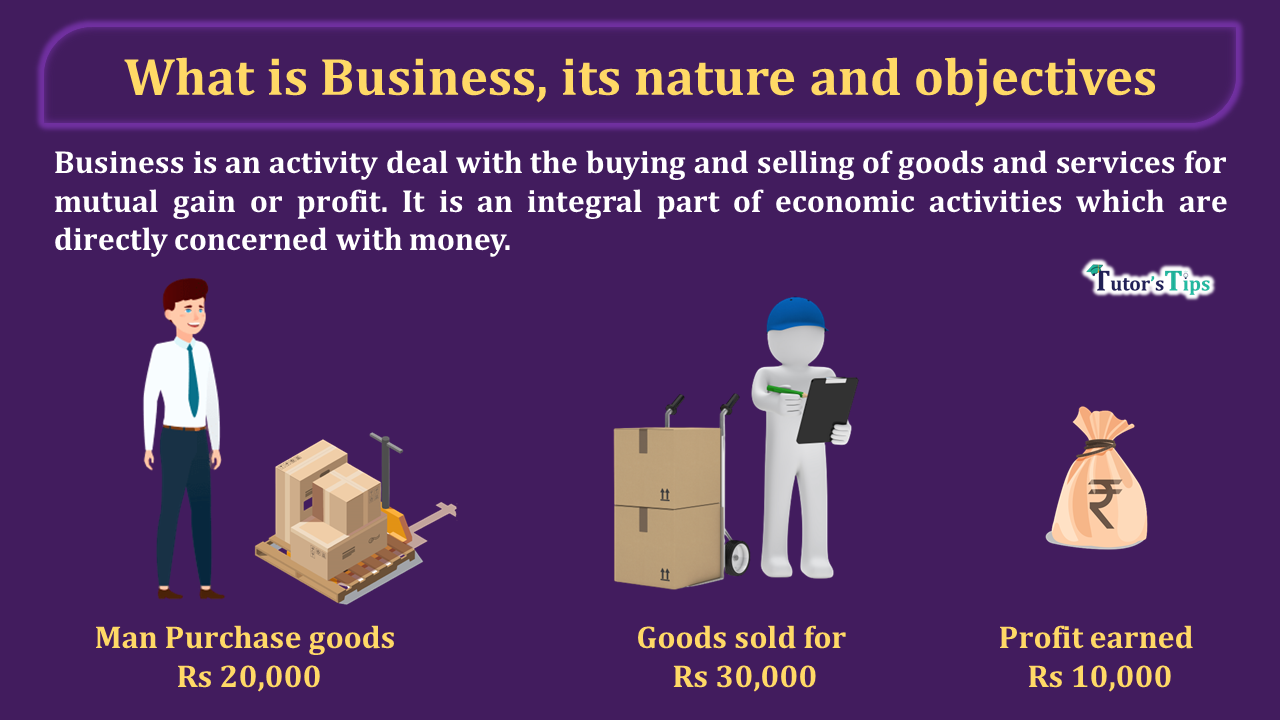Classification of Business activities will be on the basis of the nature of the business or company. The Business Activities tells about all those economic activities which are performed by people to earn a profit. we can also classify these activities on the bases of their functions and these activities include the conversion process of raw material into semi-finished or finished products.
Classification of Business activities:
Classification of Business activities depends on the basis of the functions of the business. and it can be categorized into two main types:
- Industry
- Commerce
Watch the video on this topic for your better understanding
Subscribe to our Youtube Channel
1. Industry and its classification:
It refers to an activity with the process of converting raw material into finished or consumable products. Production and processing activities are important activities in the industry and it may produce consumer as well as capital goods.
For example, Textile industries include units related to cloth manufacturing, etc.
- Primary Industries
- Secondary Industries
- Tertiary Industries
1. Primary Industries:
All those industries which are concerned with the extraction of natural resources and reproduction of animals and these industries are further divided into two parts:
a) Extractive Industries:
All those activities which involve the extraction of something from natural resources are called extractive industries. like: Fishes from rivers, minerals from earth and water, wood from the forest, etc.
b) Genetic Industries:
It refers to all those activities which involve breeding and rearing of animals or living organisms are called genetic industries. Like: rearing of plants, cattle for milk dairy farms for other dairy products, poultry farms, rearing of silkworms for cotton, rearing of sheep for wool, etc.
2. Secondary Industries:
These industries are using things that are produced by primary industries as raw materials for making the final or finished product. In other words, secondary industries convert raw material (input) into the finished product (output) for the consumers.
Advertisement-X
For example Food manufacturing, Textile manufacturing, etc.
These are further divided into two categories:
- Manufacturing industries
- Construction industries
1. Processing/Manufacturing industries:
It includes all those activities which are related to the processing and conversion of raw material or semi-finished products.
For Example: Making furniture from wood, making bread from wheat, converting cloth from cotton, etc.
These industries produced two types of goods which are as follows:
- Consumer goods: Consumers are using these goods on a daily basis, like clothes, oil, wheat, sugar, etc.
- Industrial goods are those which are concerned with those business activities related to the manufacturing of capital goods like tools and equipment, machinery, etc for making other products.
2. Construction/Engineering Industries:
All those industries are connected with construction. like: building infrastructure (building home-residential construction, building non-residential construction like dams, railways, waterways, roads, oil mining, manufacturing units, other industries, etc. These industries cannot shift their product to direct customers or in the market because these Constructions are always fixed at a particular place.
3. Tertiary industries:
These industries are connected with all those business activities which include the smooth flow of goods and services. we can say that these industries remove the hindrances arising from the first step of production to the end-user.
These business activities are classified into various service sectors:
- Baking: Loan facilities to every sector related to trading.
- Insurance: Provide assurance regarding risk
- Transport: Service related to the movement of goods from the starting point to the final destination.
- Advertising: Giving information/knowledge.
2. Commerce and its classification:
It refers to all those activities which are directly or indirectly helping in the distribution of goods and services to the consumers. Commerce is an activity of buying and selling of goods on a large scale rather than production. We can classify commerce into two categories:
- Trade
- Aids to trade
1. Trade:
It is an integral part of commerce. It includes buying and selling goods and services. Trade generates a link between the manufacturer and the consumer. Trade can be further categorised into two parts:
Advertisement-X
1)Internal Trade:
It refers to buying and selling of goods and services within the geographical boundaries of the country with home currency. It is also called as Home Trade. The internal trade is further divided into two types:
a) Wholesale Trade: under this trade wholesaler buy products from the manufacturers in large quantities and sell to the retailers. In the wholesale trade, a large amount of capital is required to run the operations.
b) Retail trade: under this type of business retailer purchase small quantities of goods from the wholesaler and then sell to their ultimate consumers. Retailers maintain a variety of goods.
2) External trade:
It refers to buying and selling of goods and services over the national boundaries. In this type of trade two or more countries may participate. External trade involves various rules and regulations, licensing, customs etc.
External trade is of the following types:
- Export: It includes the sale of goods to a foreign country.
- Import: It includes buying goods from other nations.
- Entrepot: It refers to the import of goods from one nation and exports the goods to another nation/country.
2. Aids to trade:
It refers to all those activities which are performed by the service sectors. Rendering services are the main functions of these business activities.
The business activities are classified into various service sectors:
- Baking: Loan facilities to every sector related to trading.
- Insurance: Provide assurance regarding risk
- Transport: Service related to the movement of goods from the starting point to the final destination.
- Advertising: Giving information/knowledge.
please comment your feedback whatever you want. If you have any questions, please ask us by commenting.
Advertisement-X
References: –
Also, Check our Tutorial on the following subjects:







Leave a Reply